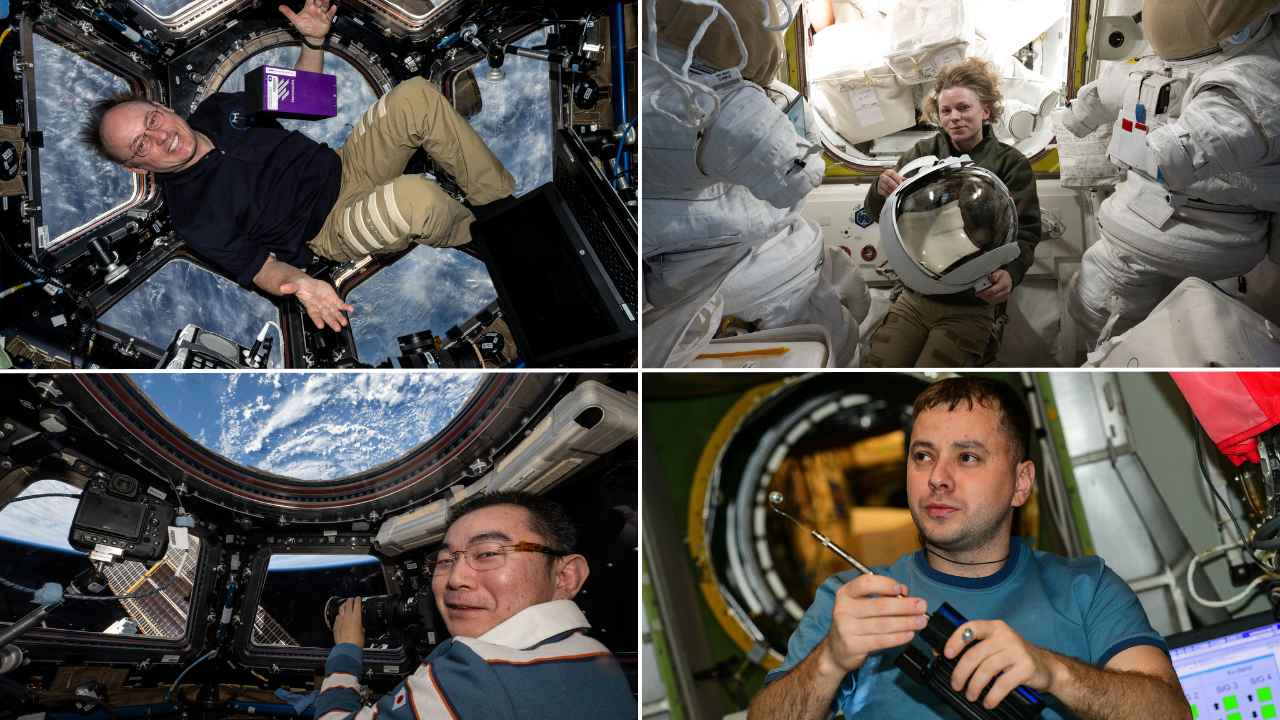NASA rolls Artemis 1's huge launch tower off pad for repairs, upgrades (photos)

The huge tower that supported the epic liftoff of NASA's Artemis 1 moon mission last month has left the launch pad.
During that Nov. 16 liftoff, NASA's Space Launch System (SLS) megarocket left some marks on the 355-foot-tall (108 meters) mobile tower — blowing off its elevator doors, for example, and damaging its crew access arm.
So NASA has rolled the tower off Pad 39B at NASA's Kennedy Space Center (KSC) and into the site's huge Vehicle Assembly Building (VAB) for repairs. The 4-mile (6.4 kilometers) move began early Thursday morning (Dec. 8) and ended about 29 hours later, at 11:26 a.m. EST (1626 GMT) on Friday (Dec. 9).
"During the return [to the VAB] aboard the crawler transporter, teams paused the roll operations several times as planned to ensure the operation occurred during daylight hours," NASA officials wrote in an update on Friday. "Focusing on transporting during daylight hours allowed for better visibility on the operations and for teams to rest overnight."
In photos: Artemis 1 launch: Amazing views of NASA's moon rocket debut
More: NASA's Artemis 1 moon mission: Live updates

Artemis 1 sent an uncrewed Orion to lunar orbit. The capsule is now on its way back to Earth; it's expected to splash down in the Pacific Ocean, off Mexico's Baja peninsula, early Sunday afternoon (Dec. 11), wrapping up the 25.5-day mission.
Artemis 2, which is scheduled to lift off in 2024, will send astronauts around the moon aboard Orion. During the launch tower's stay in the VAB, which is expected to last several weeks, technicians will start getting the huge structure ready for that crewed mission.
Breaking space news, the latest updates on rocket launches, skywatching events and more!
That work will include upgrades as well as repair and maintenance, NASA officials said. And these efforts will continue after the tower rolls out of the VAB.
"Following its stay in the VAB, it will go to the mobile launcher park site location at Kennedy where it will undergo emergency egress modifications and testing to support future Artemis missions," NASA officials wrote in Friday's update.
"Emergency egress modifications" presumably will help Artemis astronauts get away from the SLS and Orion in the event of a serious prelaunch problem — something that was not needed on the uncrewed Artemis 1.
More crewed missions will follow Artemis 2, if all goes according to plan. Artemis 3 will put astronauts down near the moon's south pole in 2025 or 2026, and future flights will help establish a crewed research base in the area.
NASA hopes that outpost is operational by the end of the decade. The agency plans to use the lessons learned from the efforts of its Artemis program to help send astronauts to Mars, something it aims to do by the late 2030s or early 2040s.
Mike Wall is the author of "Out There" (Grand Central Publishing, 2018; illustrated by Karl Tate), a book about the search for alien life. Follow him on Twitter @michaeldwall. Follow us on Twitter @Spacedotcom or Facebook.

Michael Wall is a Senior Space Writer with Space.com and joined the team in 2010. He primarily covers exoplanets, spaceflight and military space, but has been known to dabble in the space art beat. His book about the search for alien life, "Out There," was published on Nov. 13, 2018. Before becoming a science writer, Michael worked as a herpetologist and wildlife biologist. He has a Ph.D. in evolutionary biology from the University of Sydney, Australia, a bachelor's degree from the University of Arizona, and a graduate certificate in science writing from the University of California, Santa Cruz. To find out what his latest project is, you can follow Michael on Twitter.
